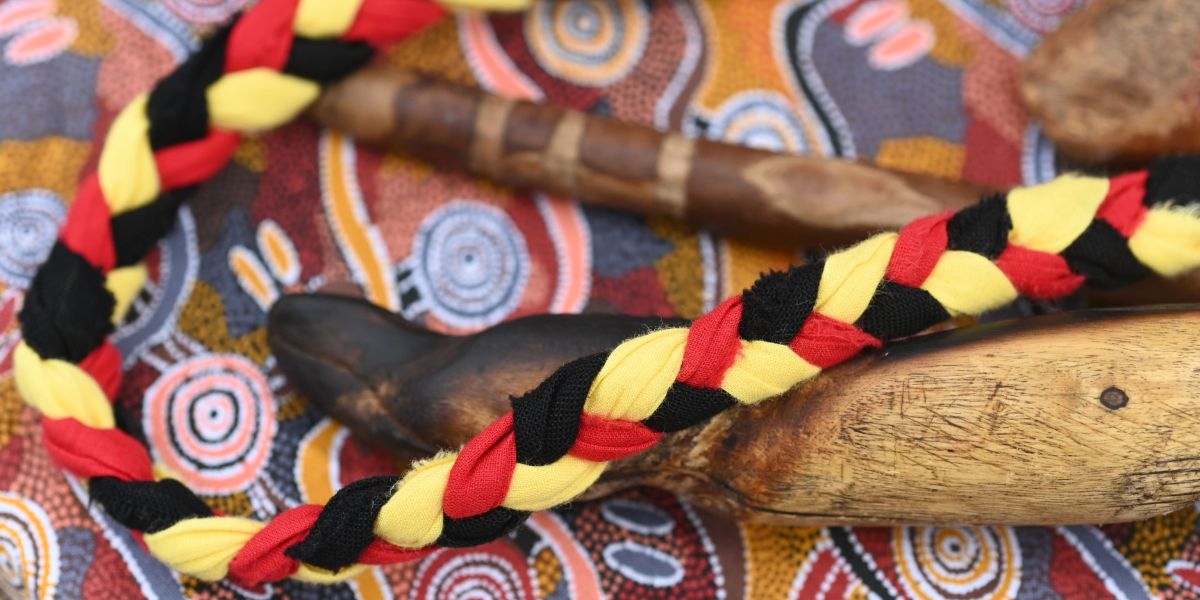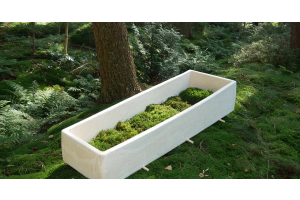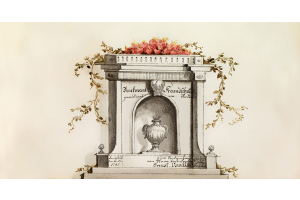
Mourning and burial ceremonies can last anywhere from days to months. Most groups impose very strict language rules during this time. Close family members may not be allowed to speak for the entire mourning period, however long that may be. Additionally, not speaking the name of those who have passed is common of aboriginal cultures. Other group members with the same name often change theirs.
Primarily, those in Northern Australia choose a form of burial. This ritual is a two step process in which the deceased is placed on a wooden board, then covered in brush and left to decompose until only the bones remain. The bones are then removed and painted ocher red and then either buried, or placed in a hollow log, depending on the group and their specific beliefs. In some instances, family members may keep bone pieces and wear them in a satchel around their neck as a keepsake.
However, archaeological evidence shows that not only was cremation a very prevalent custom, but it could also be the oldest mortuary ritual in Australia. In 1969, remains found in New South Whales, dated to be between 40,000 and 68,000 years old, provide the world's oldest evidence for cremation. They are not only the oldest remains of anatomically modern humans that have been found in Australia, to date, but also, this finding indicates that complicated rituals surrounding death were present even in the very beginning of human societies.
As with bones, ashes were often kept in small pouches to be worn as necklaces by close relatives. This is not unlike the practice of keeping a cremation urn with a loved one ashes in modern times. These traditions are continued today in Australia among the aboriginal population.
Cremation is the preferred option, among the non-indigenous population of Australia in modern times. In fact, a poll conducted by the Australian Funeral Directors Association, shows two in three Australians (66%) prefer cremation over burial when planning for their own funeral. In comparison, just one in five (20%) would choose burial with 14% having no preference.
Australian law does not require the use of a funeral director, though most Australians do chose to use one. A formal funeral ceremony is also not required. Deaths, however, are required to be registered with the Registrar of Births, Deaths and Marriages. When death occurs in a hospital, the medical staff will take care of the legal requirements. When an individual passes away at home a funeral director is required by law. Cause of death must be determined by a doctor or coroner.
Next, the body of the deceased is taken to an undertaker for either burial or cremation. Burial is more expensive than cremation, which could potentially be why so many more Australians polled say they would opt for cremation.
There are more laws surrounding cremation, than burial, and stricter penalties for breaking said laws. These stricter rules are in place because cremation is considered more permanent. An application is required from the executor, or the person left in charge of making sure the deceased's will is enforced, and then must be approved by the trustees of a public cemetery. The application covers the relationship of the executor to the deceased and funeral directions of the deceased (if any). Forms also must be signed by a doctor other than that who signed the original death certificate.
While cremation and burial are both commonly practiced in both ancient and modern times, the aboriginals use their mortuary rituals for a different purpose than non- indigenous peoples. While the aborigines primarily used their practices to prevent spirits from haunting the living, non-indigenous people use their customs in more of a commemorative manner. But, it is interesting to note that while the reasoning is different, both culture use burial and cremation. Both, in their own form, have stood the test of time.






